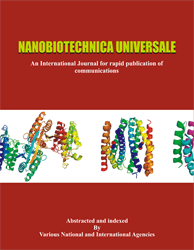Phytonematode Diversity of Spinach and its Control in Godumakunta Village of Telangana
1Dartika Swapna*, 2Geetha Rajalingam and 3Nagaraja Rao
1Department of Zoology, Nizam College, Affiliated to Osmania University Opp. LB Stadium, Basheer Bagh Campus, Gunfoundry Hyderabad - 500001 2,3Retired Professors, Department of Zoology, Osmania University Hyderabad - 500007 Corresponding author email: swapnazoology2025@gmail.com.
ABSTRACT
Phytonematodes, are a serious pests on majority of crops, causing huge economic losses. Leafy vegetable crops, such as spinach, coriander, amaranthus etc have also been reported to be heavily infected with different species of phytonematodes. In this regard, not many studies have been conducted on spinach crop to isolate and identify phytonematodes. In the present investigation, a field study, using crop beds of spinach was conducted. From the spinach soil, two specific phytonematodes, Radopholus and Criconemella were identified. To control the phytonematode, infection, organic amendment such as cowdung was added to the test soil, and synthetic nematicide, such as phorate was added to the control soil and both were tested for their nematicidal activity. Spinach soil infected with phytonematodes showed a drastic improvement after the addition of cowdung and similarly phorate treated control also exhibited a notable improvement in the phytonematode population. Compared to both the treatments, cowdung treated spinach soil showed a considerable reduction in the phytonematode population, suggesting that this could be a better organic alternative to synthetic nematicides. This study successfully isolated and identified spinach specific phytonematodes and also recommends that cowdung can be a natural nematicide as it seems to contain certain nematicidal toxins
